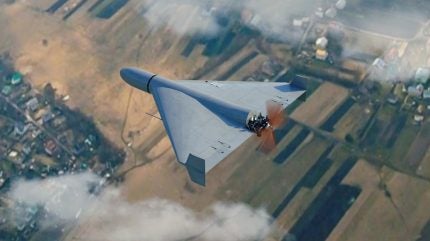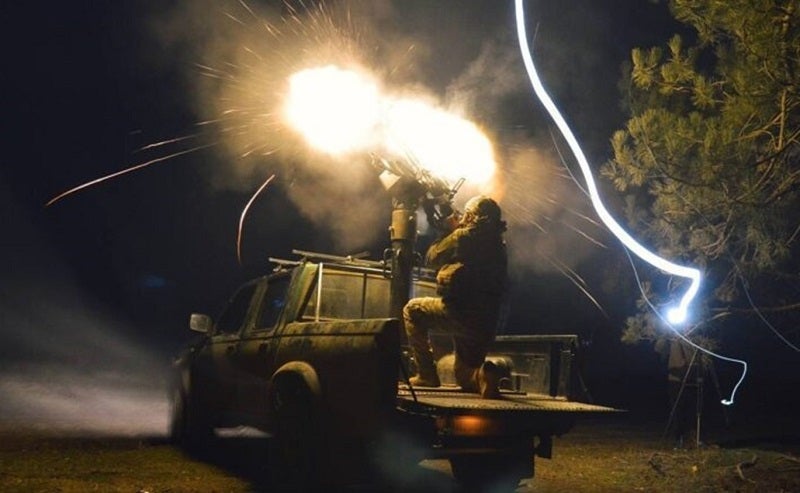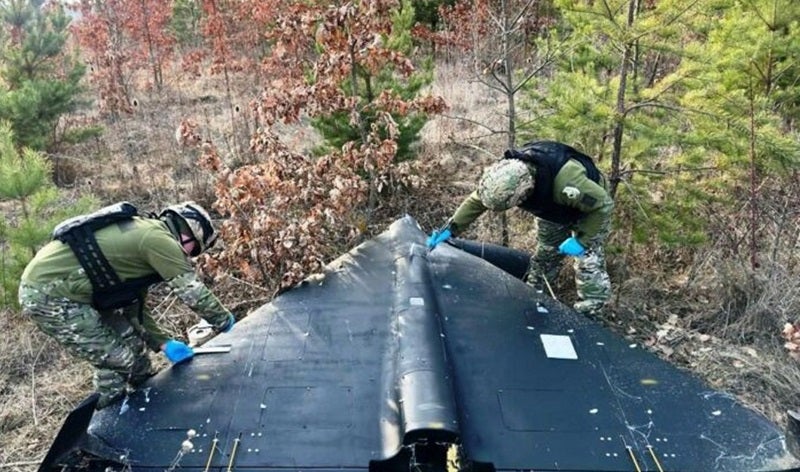
Russia is beginning to diversify its range of uncrewed aerial systems (UAS) beyond the infamous, Iranian-made Shahed family of systems which have served as the primary means for the bombardment of Ukrainian military and civilian targets.
A new set of US restrictions will be implemented to overcome the proliferated use of an alternative Chinese loitering munition. The US Treasury and State Department, together, laid out the latest sanctions to be implemented against entities within the People’s Republic of China (PRC) and Russian defence organisations on 17 October 2024.
The new controls aim to disrupt the supply and production of ‘Garpiya’ long-range loitering munitions.
Russia’s state-owned weapons company, Almaz-Antey, is targetted for coordinating the production of the Garpiya UAS from factories in China before transferring them to Russia. Likewise, the Xiamen Limbach Aircraft Engine company, simply referred to as ‘Limbach’, produces L550E engines in the PRC to be fitted into the Garpiya.
In addition, Redleplus, a Shenzhen-based supplier just 17 miles north of Hong Kong, collaborates with the Russian defence organisation TSK Vector, which serves as an intermediary between AO IEMZ Kupol and other PRC-based suppliers for Russia’s Garpiya project.
Rise of the Garpiya
Garpiya incorporates major components from the PRC such as engines and numerous electrical, mechanical and automated data processing components but the system is assembled in Russia.

US Tariffs are shifting - will you react or anticipate?
Don’t let policy changes catch you off guard. Stay proactive with real-time data and expert analysis.
By GlobalDataAccording to IEMZ Kupol, 500 of these loitering munitions were produced in the second half of 2023 while 2,000 of them were produced in the first half of 2024. Thus, the company claims the production rate has increased by 75% in under a year.
The range of the Garpiya-3, which is supposedly an upgrade of the original A1, seems to have a range of 1,200 miles (nearly 2,000km).
Shahed series
Iran’s Shahed family of UAS have been, and still continue to be, a centrepiece of Russian methods of waging war and imposing chaos over Ukraine’s armed forces and wider society.
Typically, the loitering munitions are used as a cost-effective alternative for conventional missiles given the strain of the Russian war economy two-and-a-half years into its unlawful invasion of Ukraine.
This substitution is reflected in the heaviest Russian strikes fired against Ukraine to date in August this year. The hybrid salvo, including Kinzhal ‘hypersonic’ and traditional Iskander ballistic missiles, also deployed 109 Shahed UAS.

Continual bombardments comprising these cheap loitering munitions will continue to drain Ukraine’s air defences and the Western resolve to sustain munitions.
More recently, on 20 October, the President of Ukraine, Volodymyr Zelenskyy, revealed that there had been 129 Shahed strikes in one day alone.
Russia has deployed more than 6,000 Shahed loitering munitions since the start of 2024. Albeit, the war-torn nation is not totally vulnerable as “our warriors manage to shoot down a significant portion of them,” emphasised the head of state.
The range of a Shahed varies dramatically, depending in part on how willing you are to believe Iranian sources. Regardless, there is still a wide range in maximum distances because some variants of the Shahed are able to fly further than others.
Countering loitering munitions
“We need the capability to destroy not only the storage bases for the ‘Shaheds’ but also the entire infrastructure for their production and logistics,” Zelenskyy entreated the West. “Unfortunately, terrorists know how to take advantage of the time that the free world’s indecision gives them.”
The Ukrainian leader refers to the pressure he is under to encourage the US, the largest donor of military assistance, to remove restrictions when it comes to eliminating targets deep inside Russia from which the enemy is able wage strikes against Ukraine.

In particular, the use of long-range weapons powered by American-made components hinges on US approval. Doubtless, US unwillingness rouses anger after it was found that Ukraine’s forces have been victim to the full impact of Russian weaponry powered by certain American components.
Notably, Iran has collaborated in constructing a new plant in Russia’s Tatarstan region that will reportedly manufacture at least 6,000 Shahed drones by 2025, according to the Center for Strategic and International Studies (CSIS).
However, if Garpiya production continues to boost at a considerable rate then Russia’s consolidation of both drone types, while not detracting from the continued import of Shaheds, may threaten to cultivate a more robust trilateral defence cooperation between so-called ‘axis’ powers.
Axis of autocracy
“Some big news here is that Russia is collaborating more closely than ever with its peers in the axis of autocracy – namely, Iran, North Korea, and China,” GlobalData Defence Analyst, Fox Walker, identified.
“The widespread use of the Iranian Shahed, the deployment of North Korean troops, and now the production of lethal UAS by Chinese companies (albeit perhaps without the knowledge of the government) are all examples of escalation by Russian allies.”
This escalation is vital to Russia as the Army’s casualties increase further, with a rate of up to 1,200 per day according to Walker.
“The escalation by those in Iran, North Korea, and China comes as Russia refits old tanks and relies on older recruits. Each country has its own reasons to want to see Russia win – or at least not lose – and now is a critical time with some small Russian momentum in the east of Ukraine.”
While the arrival of troops and materiel to the frontline is not yet measurable, it should be seen as further evidence that these autocratic nations are willing to work together to achieve their individual and collective goals. Even if their autocratic institutions inherently prevent any meaningful interdependence.



